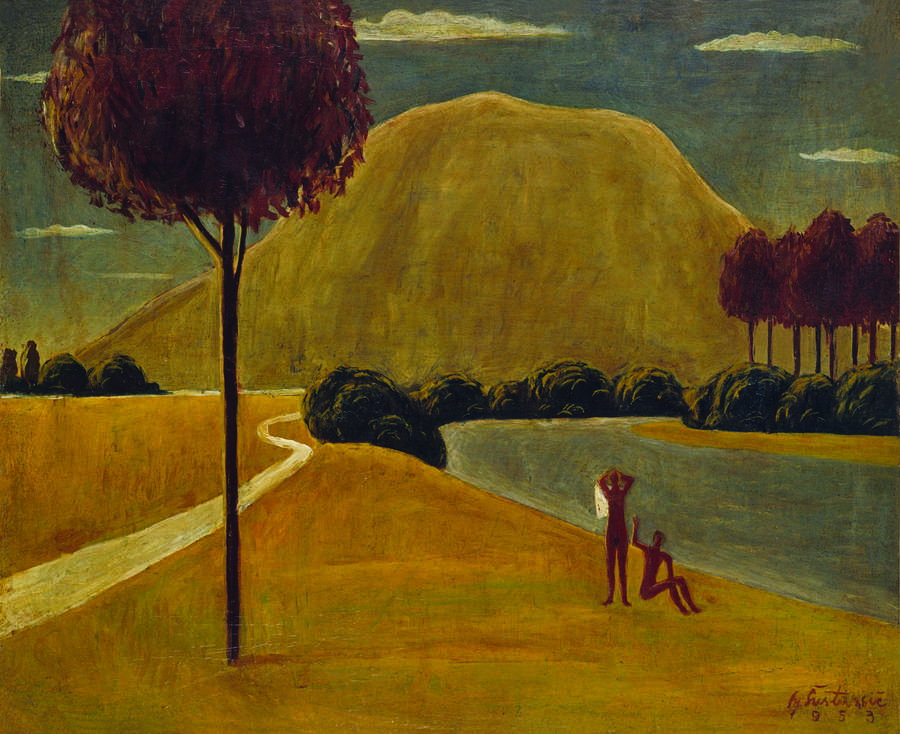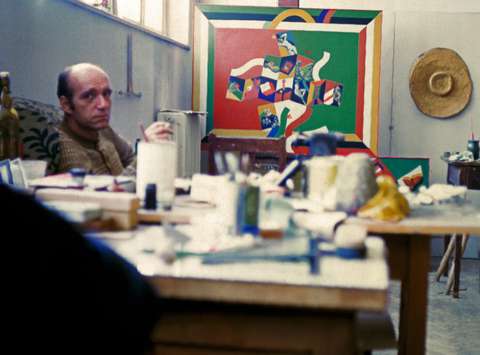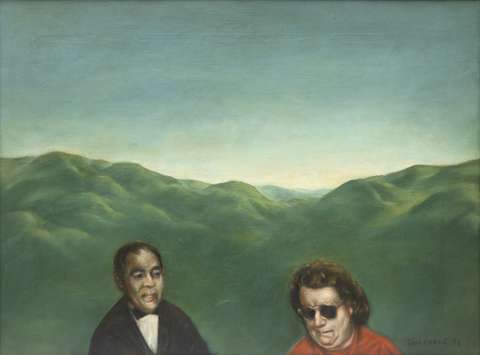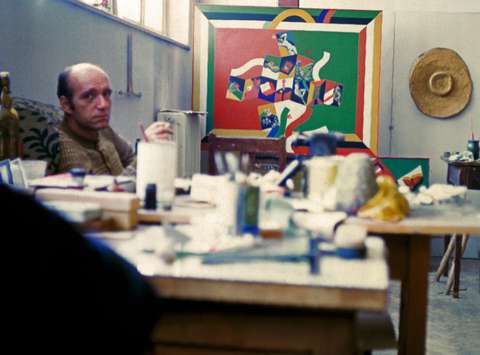Marko Šuštaršič (1927–1976)
From Landscapes to Landscapes
The retrospective exhibition marking the 45th anniversary of the Bežigrad Gallery is dedicated to one of the most visible and innovative Slovenian artists of the 20th century.
It features paintings he created in the period 1953–1975, a time during which he found his artistic voice in painting and printmaking alike. His works depict lyrically inspired, rhythmically repeated and enigmatic images of humans, particularly female nudes and male portraits, furniture and everyday objects, which come to life in an endless, indefinable space.
From landscapes to landscapes and to the sky
In remote, timeless spaces nested in stars and interstellar expanses people have been creating parallel worlds where life is usually ideal and radically different from the one they’ve been living themselves. Artists are no exception…as shown in the exhibited works of the painter Marko Šuštaršič. They reveal constellations of forgotten thoughts, actions and people whose existence hinges on snapshots of humans and ornamental signs frozen in time, waiting in typical lines. Persons, objects and fragments of ornaments coalesce into Šuštaršič’s abstract signs resembling outer space, but he creates them with imaginary links between individual lines.
The exhibition in Bežigrad Gallery features his paintings from the period 1953–1975. The painting called Interior in the Exterior (1956) says everything about the painter's artistic explorations and interests in the mid-1950s just with the title. It is an important piece of work because of the shift from an interior space, a room, to a landscape and a firmament, and because of the dynamics and positions of the pieces of furniture, which seem to about to move into the exterior.
His paintings and prints from the period 1962–1966 in particular typically feature compositions or combinations of compositions and rows of certain shapes. All the paintings and prints seem like constellations of thought. They are designed to depict infinity, which may be concrete, like the sky. Šuštaršič had already displaced and sorted out everything in spaceless and timeless dimensions in his earliest paintings and prints.
Miloš Bašin
Marko Šuštaršič (painter and graphic artist) was born on 13 November 1927 in Cerknica.
In 1951, he graduated from the Academy of Fine Arts and Design in Ljubljana under the supervision of Gabrijel Stupica and continued his postgraduate studies in mural painting under Slavko Pengov. Šuštaršič is one of those Slovenian artists who perfected their skills in Johnny Friedlaender’s atelier in Paris (1962), and later on in Amsterdam and The Hague.
In 1954, he presented his work for the first time as part of the group “Seven Young Painters” in the museum of modern art Moderna Galerija in Ljubljana, although soon after the group changed its name to “Group 53”. Group 53 made the most important contributions to post-war modernism in the area of Slovenia and the then Yugoslavia, with Marko Šuštaršič being its most prominent member.
He participated in international exhibitions, such as the 7th São Paulo Biennial, Documenta III in Kassel, 2nd Triennial in Belgrade, Ljubljana Biennial of Graphic Arts, 5th International Biennial of San Marino, and other.
In 1969, Šuštaršič became a member of Group 69, which was established at a group exhibition held in Vila Bled in Bled, and regularly participated in its exhibitions.
In 1961, he won the 2. Biennale de Paris Award for young artists for his paintings. (2. BIENNALE DE PARIS/ Deuxieme Biennale de Paris. Manifestation biennale et internationale des jeunes artistes, MUSEE D'ART MODERNE, PARIZ/PARIS, FRANCIJA /FRANCE 29.09.1961 – 05.11.1961)
In 1962, he won the Prešeren Fund Award in Ljubljana for his paintings.
He was posthumously awarded the third National Liberation War Award for artworks of Yugoslav artists in Belgrade and the Župančič Award in Ljubljana.
He died in Ljubljana on 27 March 1976.
Colophon
Production: Bežigrajska galerija 2 / MGML
Exhibition curator: Miloš Bašin
Artist: Marko Šuštaršič
Design: Miloš Bašin
Photodocumentation: Zavod Celeia, Celje, Galerija sodobnih umetnosti
Realisation of the exhibition: Technical Service MGML, Miloš Bašin
The exhibition was made by: City of Ljubljana
Art Collections: Koroška galerija likovnih umetnosti Slovenj Gradec, Mestni muzej Ljubljana, Riko Ribnica, Zavod Celeia Celje in zasebne zbirke
Location
Vodovodna 3
1000 Ljubljana
T +386 1 43 64 057
F +386 1 43 66 958
E bezigrajska.galerija1.2@gmail.com
Opening hours
Tuesday to Friday: 10:00–18:00
Saturday: 10:00–14:00
Sundays, Mondays: Closed
24 and 31 December: 10:00–14:00
1 January, 1 November, 25 December: Closed
Tickets
Free entry.



